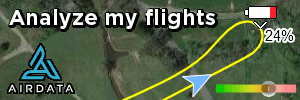Fred,
I have a different take on where the AOPA is at with this as I believe the fully support it and may have provided input and encouragement for remote ID.
The majority of general aviation and commercial pilots generally loath drones for various reasons. Let’s not forget that full scale pilots are the people filing the dearth of near miss and airspace violation drone reports to the FAA, whether the report was real or concocted, whether positive ID was obtained or not.
The AOPA membership is made up of full scale pilots, and those pilots are the people that vote in AOPA elections. They are also the people that buy the products and services provided through the AOPA and their advertising. The number of drone pilots that have joined the AOPA is small in comparison.
Despite the AOPA’s mission statement, their focus will be serving those that fund the organization. Drone operators are such a small percentage of the membership, providing inconsequential financial contributions, so their voice is being overlooked in favor of the full scale community the AOPA has traditionally served. In the past I have written opinion letters about drones to the AOPA and have never seen one published or even replied to. Considering I’ve been a member since 1988 I find that a bit irritating, but also informative.
From my perspective I just don’t see the AOPA doing anything to promote or protect drone operators until that membership segment becomes a much larger voting block than it is now. What the AOPA has done thus far relative to drones has had the appearance of maintaining operating restrictions to assure full scalers can maintain a rather elitist “playground”. Interestingly, the FAA’s drone registration numbers clearly indicate there are a lot more drone operators than full scale pilots so there is an open opportunity for drone operators to join the AOPA in large numbers to take advantage of an existing successful government lobbying body and leverage it to their advantage. Once drone operator membership exceeds full scale membership the AOPA’s focus would shift in our favor. Unfortunately that has not been happening as drone operators seem to be very short sighted and continue to avoid doing anything to preserve their rights and privileges.




